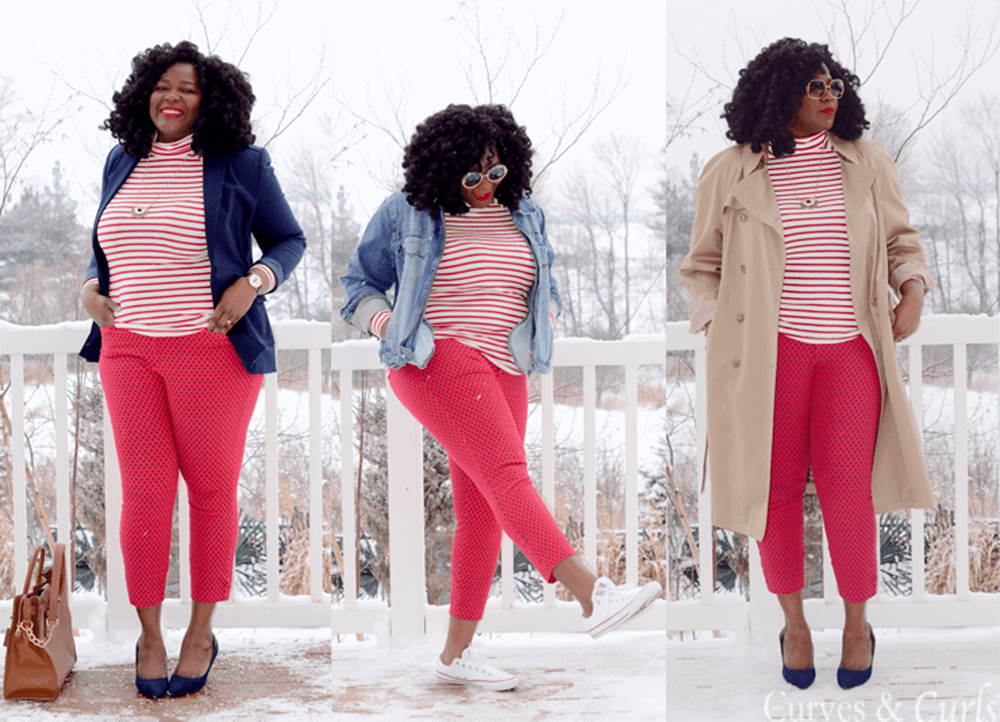Have you ever attempted to try on a shirt, only to realize that you’ll need a chainsaw to cut you out of it? While nearly everyone has had a meltdown in the four-by-four box some stores call a change room, there are some people who have a much harder time than others. For years, plus-sized individuals have struggled time and time again to fulfill and enjoy one of our nation’s most popular hobbies – shopping. It was often impossible for plus-sized girls to go on a shopping spree with their petite friends, as the stores that sold clothes for both petite and plus sizes rarely coincided. This is all starting to change with what looks to be a plus-size revolution. The term “plus size” actually has pretty dull origins. The earliest record of the term is from a 1958 commercial standards report, which is essentially a regulation sheet for clothing sizing. Ironically enough, this regulation sheet for clothing sizing has become more lenient, thus resulting in varied sizing between stores. It has morphed into a term that describes specific stores, while also degrading people of larger size. The term plus insinuates extra, as though people who buy these sizes are carrying something extra with them. Their weight is deemed excessive, insinuating that it is unnecessary and ultimately, unwanted. Retailers and media alike perpetuate this notion through normalizing petite models that fit to a specific size. Though sometimes derogatory, plus size as a concept should be seen as a form of inclusion for women and men who cannot fit into the smaller sizes most commonly offered by mainstream stores. Since its rather bland origins, plus size fashion has gained immense traction in the fashion world in the last few years. The average size for women in the United States is 12-14, however brands drastically differ in sizing. Plus size stores, including Torrid, Addition Elle, and Penningtons cater specifically to bodies that do not fit the norm, offering a beautiful selection of clothing in only larger sizes, often sizes 12 and up. The styles reflect current trends offered in typical fast fashion stores, but appeal to a niche market, where they sell clothes that fit the majority of their shoppers.
Addition Elle’s mission statement, which can be found on their website, states, “Addition Elle champions a fashion democracy, where style isn’t limited by size. We promise to deliver modern, fashionable clothes; in an inspiring, world-class shopping experience in-store and online; to make the woman who wears our clothes feel confident, beautiful, and included in the fashion world.”
Their sites don’t boast the fact that they sell plus sizes. Rather, they sell clothing, and women who like it can purchase it without the stigma of the term plus. In recent years, plus-sized fashion has also gotten increasingly popular in more mainstream clothing stores. H&M, Old Navy, and Forever 21 are all notable in the amount of plus-sized clothing they added to their collections. They don’t have every style in a larger size, instead choosing different patterns and prints in exclusively larger sizes in a specific plus size section. While their fast fashion trends may seem appealing, their exclusion and pronounced separation of “regular” and “plus” is highly discouraging. There are numerous plus-size bloggers who make it their duty to show others the styles and colours that work best for different body types. Toronto-based blogger Assa Cisse, writer of My Curves and Curls , regularly posts her take on fashion trends of the season. Recently, she explored 25 plus-sized skirts for the fall, advising that a knit pencil skirt is the best way to go for a stylish look that also keeps you warm. Instead of abiding by traditional plus size fashion rules, like only maxi’s for plus size, Cisse, like many bloggers in her field, encourages experimentation and creativity. [su_quote]“Unfortunately, we lack variety in [Canadian plus-size stores]. The United States has more, but you can definitely find great fashionable items here as well,”[/su_quote] said Cisse on her blog, before mentioning a handful of stores, even including Value Village as her thrift shop favourite. Fast fashion stores with plus-sized collections have gotten into controversy recently. as compiled by Buzzfeed, customers discovered that Old Navy was charging more for women’s plus-sized clothing but was not charging more for the men’s equivalent, despite both styles using the same amount of fabric. Gap, which owns Old Navy, issued a statement saying that women’s fabrics cost more which is why the clothing is more expensive. Either way, Old Navy is charging more for women who have less options than their smaller counterparts, and the company is taking advantage of them. There is much less fabric in a size two shirt than a size 10, but these are almost always the same price. [su_pullquote]There is a larger problem than Old Navy charging more for a pair of pants. The term plus size has been dropped in this article several times, suggesting there is a clear distinction between normal and plus, regular and large.[/su_pullquote] What is important to remember is that all women deserve to have access to clothes that make them feel beautiful and shouldn’t feel bad for buying clothes that work for their body. We live in a culture that is obsessed with appearances and sizes. It is important to remember, no two people are created the same. The number on your pant size is not a reflection of your character, your mind, or your inner beauty. In fashion, there is one rule, wear what makes you feel confident. As long as it fits you and your personality, you can forget the label and size. In real life, there is no normal.
Melissa Gonik, Contributor Featured image courtesy of Assa Cisse


